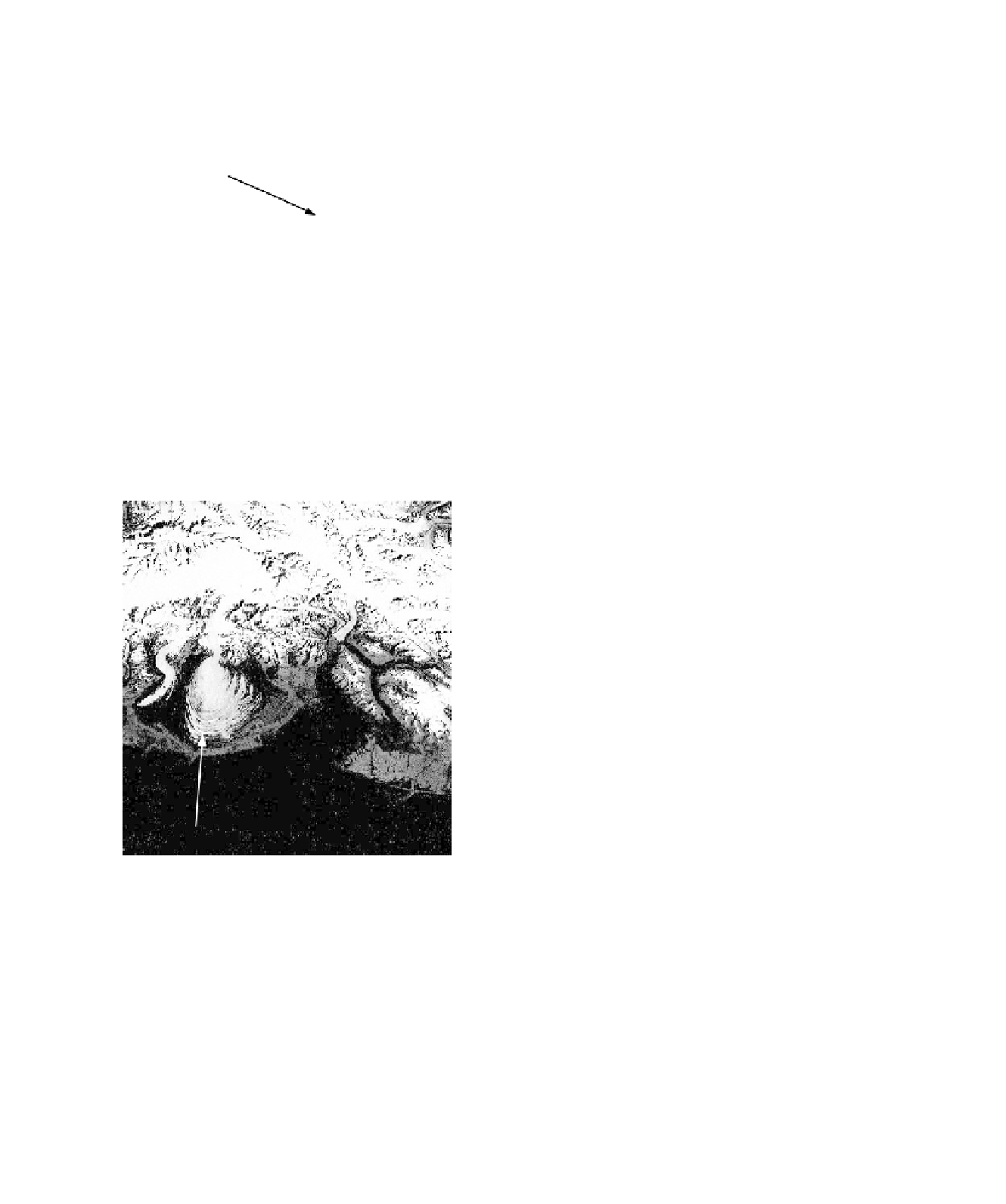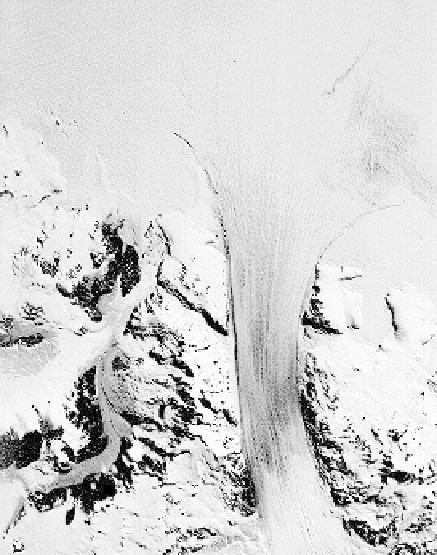Geoscience Reference
In-Depth Information
along glide planes parallel to the basal planes of the
hexagonal lattice. Since crystals in ice are not usually
aligned along common axes, the polycrystalline aggregate
rearranges, and recrystallization takes place during strain or
flow. Natural ice crystals in the actively deforming layer of a
glacier also contain a myriad of gaseous, liquid, and solid
impurities, and inclusions. It is not surprising therefore that
natural ice deformation is rather complex, with time-
dependent behavior seen during the initial stages of applica-
tion of stress. Primary, secondary, and tertiary
rheologic creep
regimes
may be identified, with secondary creep represent-
ing a sort of steady state dominant in glaciers, which are
usually responding to load- and slope-induced stresses in
the range 50-200 kPa (0.5-2 bar). For applied stresses of
this magnitude in the laboratory, the shear strain rate of
creeping glacier ice is given by d
u
/d
z
Antarctic ice sheet
Flow-lines diverge as
they run out to the
Ross ice stream
outflow
n
where
n
is an
exponent ranging between 1.5 and 4.2,
k
is an experimental
constant, and
k
is the shear stress. (Compare this to the
Newtonian law for fluids (Section 3.9) when
n
1 and 1/
k
is the molecular viscosity).
n
is most reliably estimated as 3,
while
k
is partly a temperature dependent (Arrhenius) func-
tion controlled by the energy required to activate creep. It is
also a function of crystal size, shape, and inclusion content.
A simpler expression for ice strain derived from Antarctic
field studies using borehole data yields a linear flow law for
the strain rate, of the form d
u
/d
y
Fig. 6.77
Outflowing Antarctic ice streams (see also Fig. 6.83).
.
The basal shear stress arising from valley glacier ice slid-
ing over a plane inclined bed may be approximately given
by the familiar tractive stress equation (Sections 3.3.4)
0
k
g
h
sin
, where
is the density of ice,
h
is ice thick-
ness, and
is the mean valley floor (or ice surface) slope.
In detail the velocity profile of an ice flow resembles that of
a non-Newtonian plastic.
In Nature, the mechanical flow of ice depends on the
largely unknown process of interaction between a basal ice
layer, a deeply cracked (crevassed) ice column, and a solid
bedrock and sediment substrate lubricated by seasonal gla-
cial meltwater. It is the coupling of the three materials that
is really the key to the whole process. Two types of kine-
matics for flowing glacial ice are proposed (Fig. 6.79):
1
Warm, wet ice beds lie close to the pressure melting point
at the glacier sole (ignoring the conditions throughout the
rest of the ice column), and the glacier slides over its bed on
a slip-plane of fluid-rich and highly porous sediment. Most
glaciers, including both polar ice streams and high latitude
valley glaciers, seem to exist in this state. It is quite instructive
to remember that the weight of over 1,000 m of Antarctic ice
is held up by pore fluid pressure in a thin (5-6 m) basal
deforming layer of till.
2
Cold, dry ice beds are a largely hypothetical state
reached when ice lies well below its pressure melting point
Malaspina glacier
Fig. 6.78
Radially outflowing piedmont tidewater Malaspina glacier
lobe, Alaska.
Ice comprises an aggregate of roughly equigranular crys-
tals belonging to the hexagonal crystal system; crystal size
usually increasing with time and/or depth. When stressed,
by burial in a glacier or insertion in a test rig in the labora-
tory (Section 3.15), each crystal deforms easiest internally


Search WWH ::

Custom Search